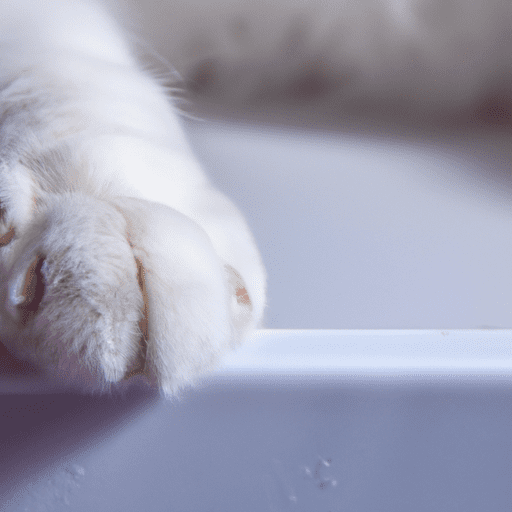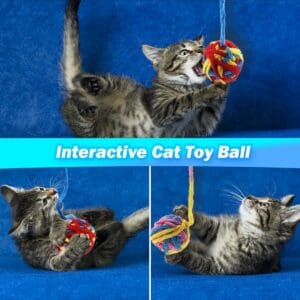Do you ever find yourself scratching your head over your cat’s quirky behavior? From excessive meowing to scratching furniture, cats can present a range of behavior problems that can leave their owners feeling frustrated. In this article, we will explore some common cat behavior issues and provide practical solutions to help you better understand and address these challenges. Whether you’re a seasoned cat owner or a new kitten parent, this guide will equip you with the knowledge and tools to foster a harmonious relationship with your feline friend.
Litter Box Problems
Inappropriate Elimination
Having a cat that decides to do their business outside of the litter box can be frustrating. Fortunately, there are usually some underlying reasons behind this behavior. One common cause is a medical issue, such as a urinary tract infection. It’s essential to rule out any medical conditions by consulting with your veterinarian.
Another possible reason for inappropriate elimination is litter box aversion. Your cat may not like the type of litter you are using or the cleanliness of the box. Cats are known for their cleanliness, so it’s crucial to keep the litter box clean at all times. Try scooping it daily and completely changing the litter at least once a week.
Litter Preference
Cats can be quite particular when it comes to their litter preferences. Some may prefer a certain type of litter, such as clumping or non-clumping. Others may have a preference for a particular texture, like fine or coarse grained litter. Experiment with different types to see which one your cat prefers. Remember to gradually introduce new litter to avoid overwhelming them.
Litter Box Placement
The location of the litter box is another important factor in preventing litter box problems. Cats prefer privacy and quiet when using the litter box, so it’s best to place it in a low-traffic area of your home. Avoid placing it near noisy appliances or areas with a lot of foot traffic, as this may deter your cat from using it.
Additionally, if you have multiple cats, make sure to provide enough litter boxes. The general recommendation is to have one litter box per cat plus one extra. This will reduce competition and potential conflicts between cats over access to the litter box.
Litter Box Size and Cleanliness
The size of the litter box is crucial for the comfort of your cat. It should be large enough for your cat to move around and dig comfortably. If your cat is straining to fit or has to contort their body, it may deter them from using the litter box.
Maintaining a clean litter box is essential for encouraging proper elimination behavior. Cats are sensitive to odors, so if the box becomes too dirty or smelly, they may avoid it. Regularly scoop the litter and remove any waste. Also, ensure you completely change the litter and wash the box periodically.
Aggression
Fear Aggression
Aggression in cats can be triggered by fear, and it’s essential to understand the underlying causes to address the behavior. Fear aggression occurs when a cat feels threatened or scared, causing them to react aggressively. This behavior may be directed towards humans, other animals, or even inanimate objects.
To help your cat overcome fear aggression, it’s crucial to create a calm and secure environment. Offer hiding spots or safe spaces where your cat can retreat when they feel anxious. Avoid forcing interactions or punishing your cat for their behavior, as this may exacerbate the fear and aggression.
Redirected Aggression
Redirected aggression occurs when a cat becomes agitated by one stimulus but directs their aggression towards another target. This can happen when a cat sees another animal through a window and becomes frustrated because they cannot reach them. They may then redirect their aggression towards a family member or another pet in the household.
To prevent redirected aggression, it’s essential to minimize opportunities for your cat to become agitated. Close blinds or curtains to block visual stimuli outside. If a situation arises where your cat is exhibiting signs of agitation, calmly remove them from the area and provide distractions to redirect their attention.
Territorial Aggression
Cats are naturally territorial animals, and aggression can arise when they perceive a threat to their turf. This can occur when a new cat or pet is introduced to the household, or when unfamiliar people come into their territory. Territorial aggression may involve hissing, growling, swatting, or even biting.
Introducing a new pet or person gradually can help decrease territorial aggression. Use scent exchange techniques by swapping bedding or rubbing a cloth on each cat to familiarize them with each other’s scent. Provide separate spaces and resources, such as food bowls and litter boxes, to minimize competition and potential conflicts.
Play Aggression
Play aggression is common in cats, especially kittens. It occurs when a cat becomes overly excited or stimulated during playtime and starts biting or clawing. While it may be normal behavior for a cat, it’s crucial to redirect their play aggression towards appropriate toys and not your hands or feet.
Engaging in interactive play sessions with appropriate toys can help redirect your cat’s aggression. Wand toys or toys that mimic prey can provide an outlet for their hunting instincts. Avoid using your hands or feet as play items, as this can encourage them to see them as targets for biting or scratching.
Scratching Furniture
Natural Behavior
Scratching is a natural behavior for cats that serves various purposes. It helps them stretch their muscles, mark their territory, and remove the dead outer layer of their claws. While scratching is essential for cats, it can become problematic when they target your furniture or other valuable items.
Understanding that scratching is an instinctual behavior can help you address the issue more effectively. Instead of punishing your cat for scratching furniture, provide them with appropriate alternatives.
Inadequate Scratching Solutions
Sometimes, cats may avoid scratching posts or other alternatives because they don’t meet their preferences. Experiment with different types of scratching surfaces, such as sisal rope, cardboard, or carpeting, to see what your cat prefers. Place these alternatives near the furniture they are currently targeting and gradually move them to a more desirable location.
Environmental Enrichment
Cats need mental and physical stimulation to keep them content and prevent destructive behaviors like furniture scratching. Providing environmental enrichment can help fulfill their natural instincts. Consider adding vertical spaces, such as cat trees or shelves, where your cat can climb and perch. Offering interactive toys and puzzle feeders can also keep them mentally engaged.
Training and Deterrence
Training your cat to use appropriate scratching surfaces involves positive reinforcement. Whenever you see your cat using the scratching post or other alternatives, reward them with treats or praise. If you catch them scratching furniture, gently redirect them to the appropriate surface. You can also use deterrents like double-sided tape or a motion-activated alarm to discourage scratching on furniture temporarily.
Excessive Meowing
Attention Seeking
Cats might resort to excessive meowing to seek attention from their owners. They may want food, playtime, or simply want some affection. If your cat’s meowing becomes too frequent and disruptive, it’s essential to address this behavior without reinforcing it unintentionally.
Ignore your cat’s meowing when it is excessive and not appropriate. Instead, provide attention or playtime when they are calm and quiet. Establish a consistent routine for feeding and play to help meet your cat’s needs and minimize attention-seeking behavior.
Hunger or Thirst
Excessive meowing can also be a sign that your cat is hungry or thirsty. Make sure you are providing them with enough food and fresh water throughout the day. Consider feeding them smaller meals more frequently or using puzzle feeders to provide mental stimulation while eating.
Medical Issues
If your cat’s meowing is out of character or accompanied by other signs of illness, it’s crucial to consult with your veterinarian. Certain medical conditions, such as hyperthyroidism or cognitive dysfunction, can cause excessive vocalization in cats.
Anxiety or Stress
Cats are sensitive creatures and can become anxious or stressed in certain situations. Changes in the household, such as moving, introducing a new pet, or the presence of unfamiliar people, can trigger excessive meowing. Creating a calm and predictable environment, providing hiding spots, and using pheromone diffusers can help alleviate anxiety and reduce excessive vocalization.
Overall, understanding and addressing the underlying reasons for your cat’s excessive meowing can lead to a more peaceful and harmonious environment for both you and your feline companion.
Spraying
Marking Territory
Spraying is a form of scent marking used by cats to communicate and establish their territory. Both male and female cats can engage in spraying behavior, although it is more common in unneutered males. Typically, they will back up against a vertical surface and spray urine, which contains pheromones unique to each cat.
To prevent spraying, it is recommended to have your cat spayed or neutered if they haven’t been already. This can help reduce their urge to mark their territory. Additionally, providing ample vertical spaces, such as cat trees, and ensuring a calm and stable environment can help alleviate stress that may contribute to spraying.
Hormonal Issues
Unneutered male cats are more prone to spraying due to hormonal changes. Spraying behavior can be significantly reduced or eliminated by having your cat neutered. This procedure removes the source of the hormones responsible for territorial marking.
Stress or Anxiety
Stress and anxiety are common triggers for spraying behavior. Cats may spray as a response to changes in their environment or when they feel threatened or insecure. Identifying and addressing the source of stress can help minimize spraying incidents.
Creating a predictable and secure environment, providing hiding spots, and using pheromone diffusers can help reduce stress and anxiety in cats. Also, avoid punishing your cat for spraying, as it can exacerbate their stress and potentially worsen the behavior.
Environmental Factors
If your cat is spraying in response to perceived threats from other cats outside, consider limiting their access to windows or blocking their view of the outside. This can help reduce the triggers for spraying behavior. Additionally, clean any sprayed areas thoroughly with an enzymatic cleaner to remove the scent and discourage future marking.
By addressing the underlying causes of spraying and providing a conducive environment for your cat, you can significantly reduce or eliminate this behavior and maintain a cleaner and more pleasant living space.
Introducing a New Pet
Gradual Introduction
Introducing a new pet to your household requires careful planning and a gradual process. Animals, including cats, can be territorial and may feel threatened by the presence of a newcomer. To ensure a smooth transition, start by slowly introducing the scent of the new pet to your existing cat.
Allow your cat to sniff blankets or toys that carry the scent of the new pet. This helps familiarize them with the new scent without direct contact. Gradually increase the exposure by feeding your existing cat and the new pet on opposite sides of a closed door.
Positive Reinforcement
Reward your cat with treats or praise whenever they exhibit calm and non-aggressive behavior during the introduction process. This positive reinforcement helps create positive associations with the new pet and encourages acceptance.
Separation and Supervision
During the initial stages of introduction, it’s essential to keep the new pet and your existing cat separated. This can be achieved by using baby gates or keeping them in separate rooms. Gradually allow supervised interactions, making sure to separate them if any signs of aggression or fear are displayed.
Supervision is key during the introduction period to ensure the safety of both your cat and the new pet. Be patient and allow them to adjust at their own pace.
Scent Exchange
To further promote acceptance between your cat and the new pet, engage in scent exchange techniques. Rub a cloth or bedding on each animal and place it in the other’s area. This helps familiarize them with each other’s scent and can reduce tension during the introduction process.
By following these gradual introduction steps, providing positive reinforcement, and ensuring a safe and supervised environment, you can help your cat and the new pet become acquainted and coexist peacefully.
Furniture Climbing
Explorative Nature
Cats are natural climbers and have a strong desire to explore their environment. Climbing provides them with exercise, mental stimulation, and a sense of security. While it can be frustrating when they start climbing on furniture, it’s essential to provide alternative options to satisfy their climbing instincts.
Vertical Space Alternatives
To prevent furniture climbing, provide your cat with dedicated vertical spaces where they can climb and perch. Cat trees with multiple levels, shelves mounted on walls, or window perches can offer opportunities for your cat to observe their surroundings and indulge their climbing instincts.
Training and Deterrence
Training your cat to avoid climbing on furniture involves redirecting their behavior towards more suitable alternatives. Whenever you catch your cat climbing on furniture, gently redirect them to their designated climbing areas using toys or treats. Consistency is crucial in reinforcing this training.
Using deterrents, such as double-sided tape or aluminum foil, on the areas where your cat frequently climbs can discourage them from using the furniture temporarily. Gradually, as they become more accustomed to the designated climbing areas, you can remove the deterrents.
Scratching Posts and Cat Trees
Combining climbing opportunities with appropriate scratching surfaces can help redirect your cat’s natural instincts and prevent them from climbing on furniture. Providing sturdy scratching posts or cat trees covered in sisal rope or carpeting can fulfill your cat’s need to climb and scratch, while protecting your furniture from damage.
By understanding your cat’s instinctual need to climb, providing suitable alternatives, and utilizing positive reinforcement, you can discourage furniture climbing behavior and promote a harmonious living environment.
Excessive Chewing
Teething
Like human infants, kittens go through a teething phase during which their gums may be sore and itchy. To alleviate discomfort, they may resort to excessive chewing. Providing appropriate chew toys designed for kittens can help redirect their chewing behavior and provide relief.
Boredom or Lack of Play
Excessive chewing can also result from boredom or a lack of mental stimulation. Ensure your cat has plenty of toys and interactive playtime to keep them engaged and mentally stimulated. Rotate their toys regularly to prevent them from becoming bored.
Dental Problems
If your cat’s chewing is excessive or accompanied by difficulty eating or bad breath, it’s crucial to consult with your veterinarian. Dental problems, such as gum disease or broken teeth, can cause discomfort and lead to excessive chewing. A dental examination and appropriate treatment can help resolve these issues and alleviate the chewing behavior.
Environmental Enrichment
Providing environmental enrichment can help prevent excessive chewing. Consider offering puzzle toys or treat-dispensing toys that require your cat to work for their food. This mental stimulation can keep them occupied and reduce their need to chew on inappropriate objects.
By providing appropriate chew toys, addressing boredom, addressing potential dental problems, and offering environmental enrichment, you can help redirect your cat’s chewing behavior and promote a healthier and safer environment for both your cat and your belongings.
Hunting Behavior
Indoor Cats’ Natural Instincts
Indoor cats retain their natural instincts to hunt and stalk prey, even if their prey consists of toys or imaginary creatures. Engaging in hunting behavior is not only mentally stimulating for cats but also provides exercise and environmental enrichment.
Providing Interactive Play
To satisfy your cat’s hunting instincts, engage in interactive play sessions using toys that simulate prey. Wand toys with feathers or toys that mimic small rodents or insects can trigger your cat’s predatory instincts. Allow them to stalk, pounce, and chase during playtime to fulfill their natural hunting behavior.
Hiding Food or Treats
Another way to provide mental and physical stimulation is by hiding small portions of food or treats around your home. This allows your cat to use their sense of smell and tracking abilities to search for and “capture” their prey.
Satisfying Prey Drive
Understanding and embracing your cat’s hunting behavior can help prevent boredom and channel their energy into positive outlets. By engaging in interactive play, providing opportunities for hunting and stalking, and offering food puzzles or treat-dispensing toys, you can fulfill your cat’s natural instincts and promote their overall well-being.
Fear and Phobias
Socialization and Exposure
Proper socialization and exposure to a variety of people, animals, and environments during a cat’s early development stages can help prevent fear and phobias later in life. Positive experiences and gentle exposure to new stimuli can build their confidence and reduce the likelihood of developing fearful behaviors.
Desensitization and Counterconditioning
If your cat already exhibits signs of fear or phobias, desensitization and counterconditioning can help. This involves gradually exposing your cat to the stimuli that trigger their fear in controlled and positive ways.
For example, if your cat is afraid of loud noises, start by playing a recording of the noise at a barely audible level while offering treats and praise. Gradually increase the volume over time as your cat becomes more comfortable. This gradual exposure helps your cat associate the feared stimulus with positive experiences.
Creating Safe Spaces
Providing your cat with safe spaces where they can retreat when they feel anxious or afraid is crucial. Designate a quiet area in your home that is set up with comfortable bedding, toys, and hiding spots. Make this area off-limits to other pets or children to ensure your cat’s safety and give them a sense of security.
Seeking Professional Help
If your cat’s fear or phobia significantly impacts their quality of life or poses safety risks, it may be necessary to seek professional help from a veterinarian or animal behaviorist. They can provide specialized guidance, behavior modification techniques, and, if necessary, recommend medications to help alleviate your cat’s fear and phobias.
In conclusion, understanding and addressing your cat’s fears and phobias through proper socialization, gradual exposure, creating safe spaces, and seeking professional help when needed can help promote a calmer and happier life for your cat.








